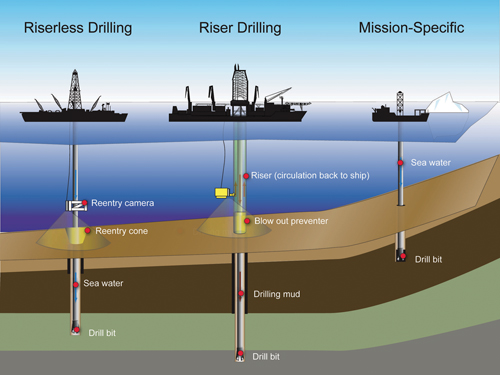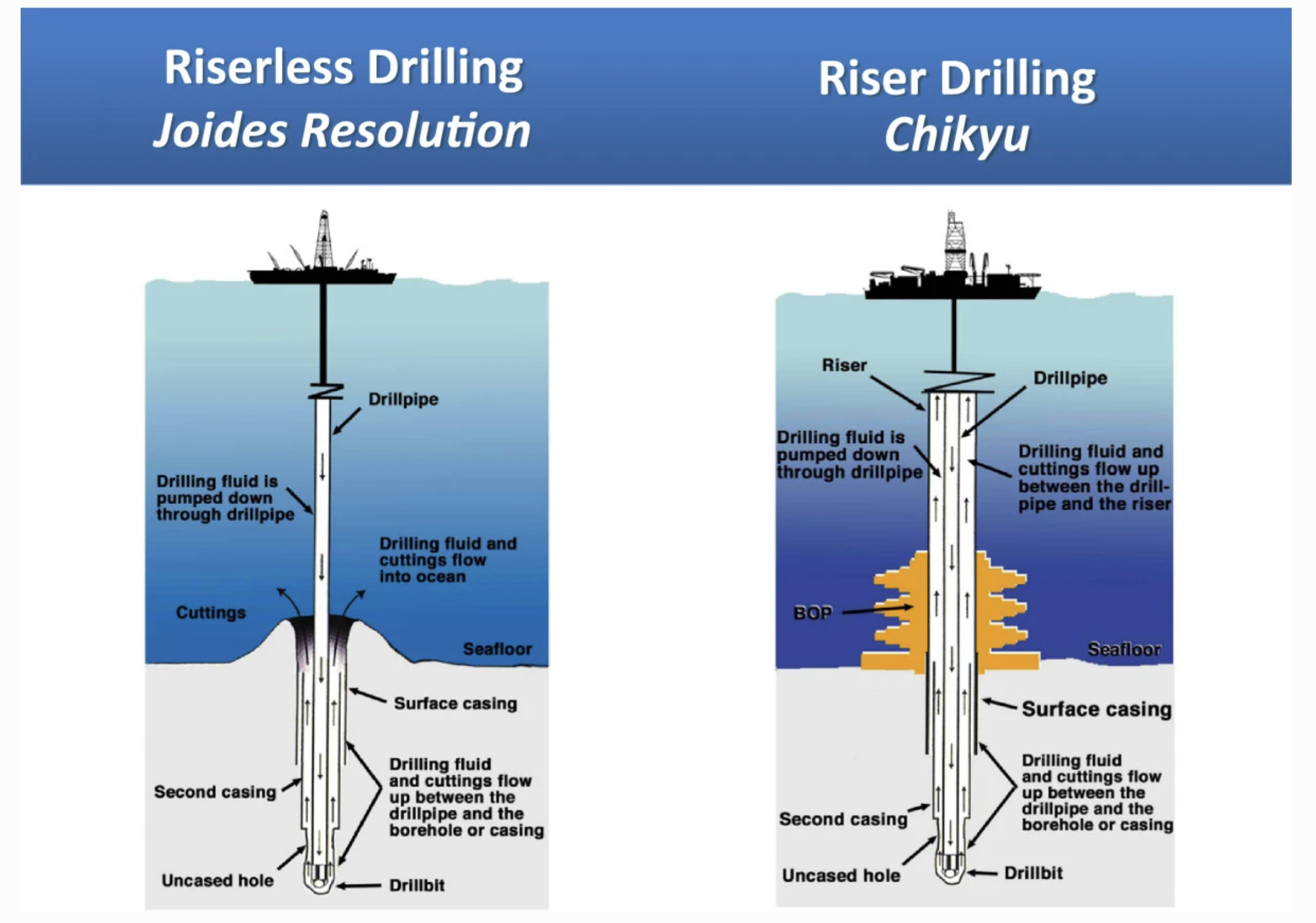3.1 Scientific Ocean Drilling Vessels

So many important scientific discoveries, along with societal benefits, have been made possible through scientific ocean drilling. To access these water, sediment, and rock samples that have led scientists to this new knowledge about our planet, the drilling vessels have played a critical role in the entire scientific process. We start here is a broad overview of the vessels and programs under which they operated, with additional details provided in future pages.
The Drilling Platforms
The results of Project Mohole with CUSS 1, despite not achieving its original objective of reaching Earth’s mantle, showed that a drillship could remain in a geographic position on open water and successfully retrieve layers of marine sediments and crustal rock. There were also advancements in the technology utilized in scientific ocean drilling. The successor drillships Glomar Challenger and JOIDES Resolution moved forward with riserless drilling, while Chikyū operates with riser drilling. Mission-specific platforms function differently, and depending on the ship, will drill in shallow and/or ice-covered waters where these drillships are unable to operate.
Riserless drilling starts with an expedition pre-survey for safety planning, ensuring that any drilling activity at a site will not penetrate a reservoir of oil or gas. This safety check is critical, as there are no blowout preventers utilized – drilling mud is all that is used to stabilize the borehole. Riser drilling stabilizes the borehole with a larger pipe outside of the drill pipe, which controls the pressure of the mud as well as the hole. The drill mud is circulated through this system and can be reused. A blowout preventer extends to the seafloor and protects the drillship and controls for gas pressure. More details of riser drilling are on the Chikyū page with a detailed image on the Chikyū website. Riser drilling has the capability to sample deeper than riserless drilling.

The Drilling Programs
The following timeline walks one through the scientific ocean drilling programs from the beginning in 1968 to the conclusion of the most recent program in 2024.
This video was released in 2015 to introduce the International Ocean Discovery Program (IODP) and recognizes the contributions of JOIDES Resolution, Chikyū, and mission-specific platforms (MSPs).
Exercise: Connecting Science and Society Through IODP’s Work
After viewing the video above, respond to the following questions:
a) The video defines the four critical research themes carried out during IODP. How can scientific ocean drilling advance our scientific knowledge on each of these four themes?
b) How can these scientific results apply to and benefit society?

